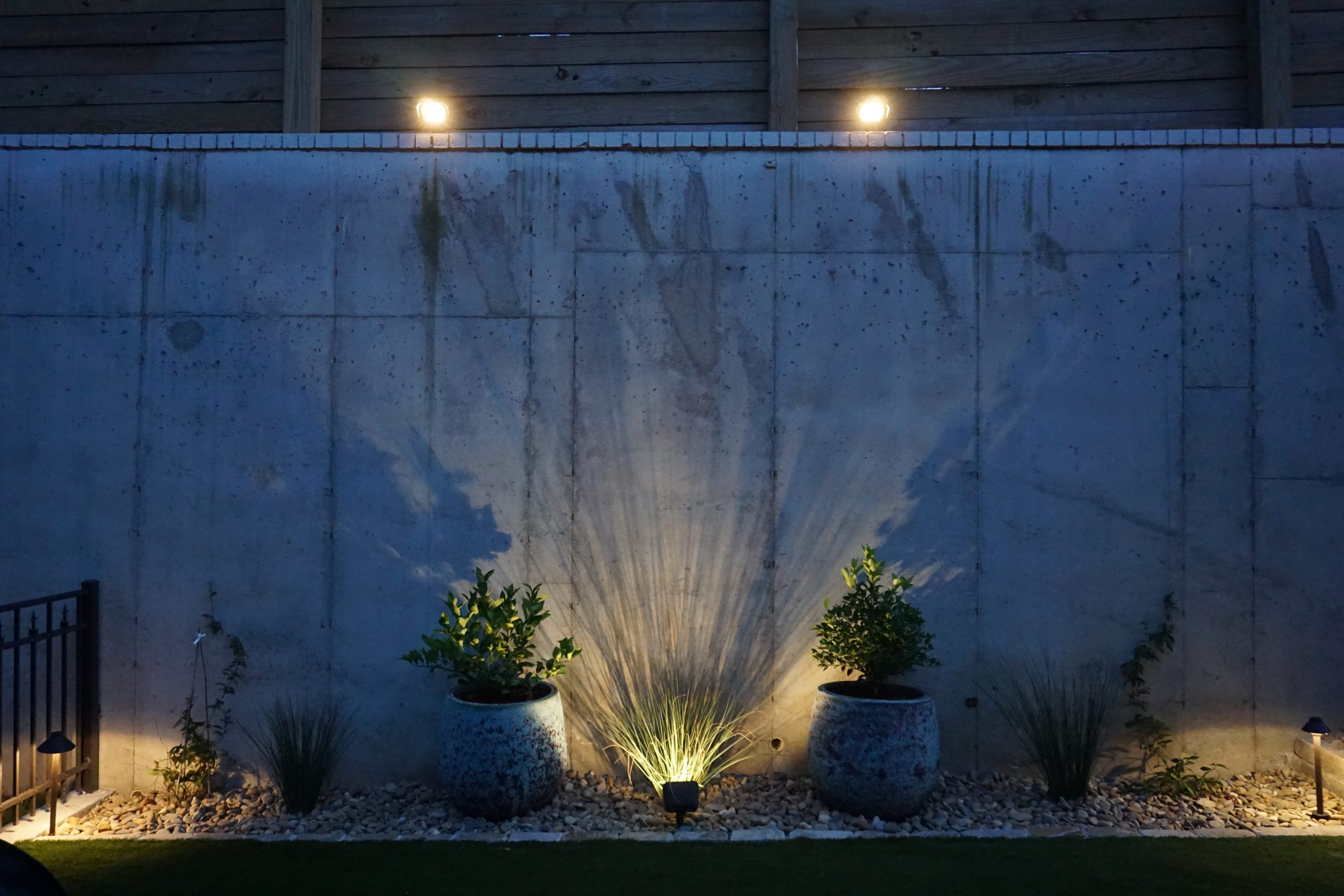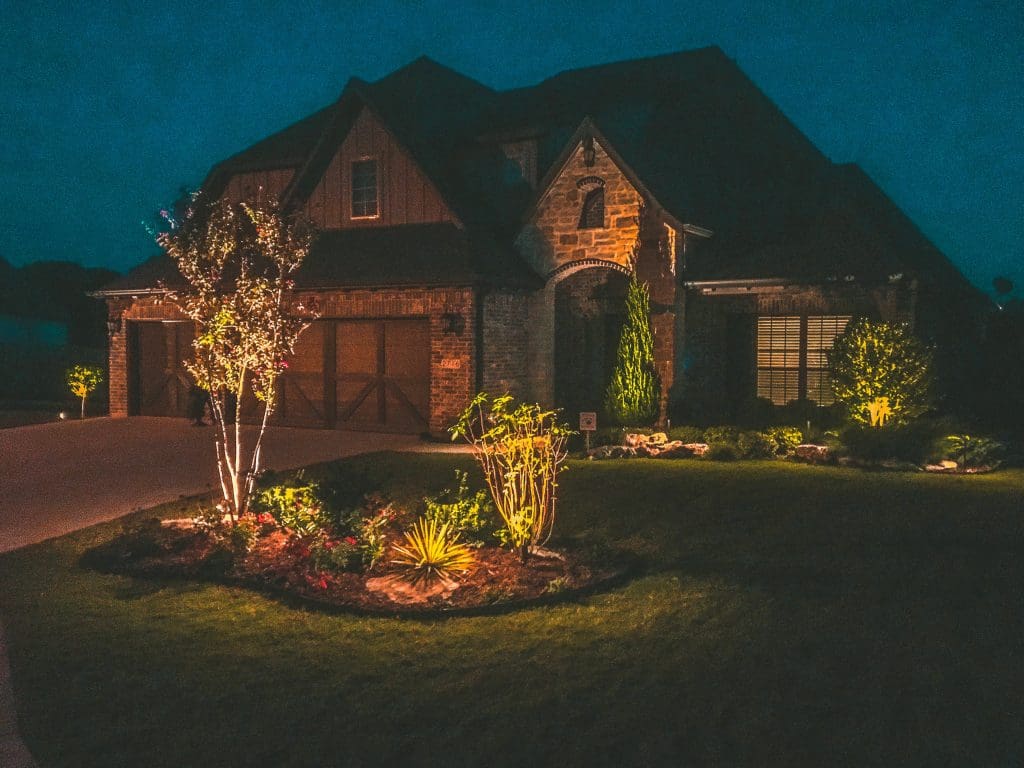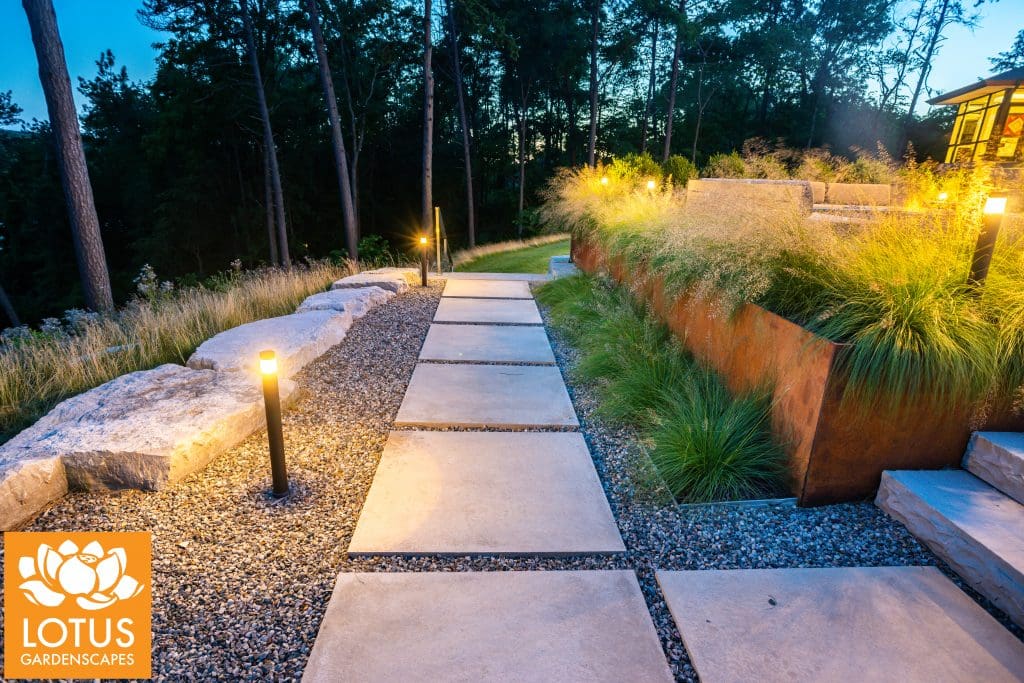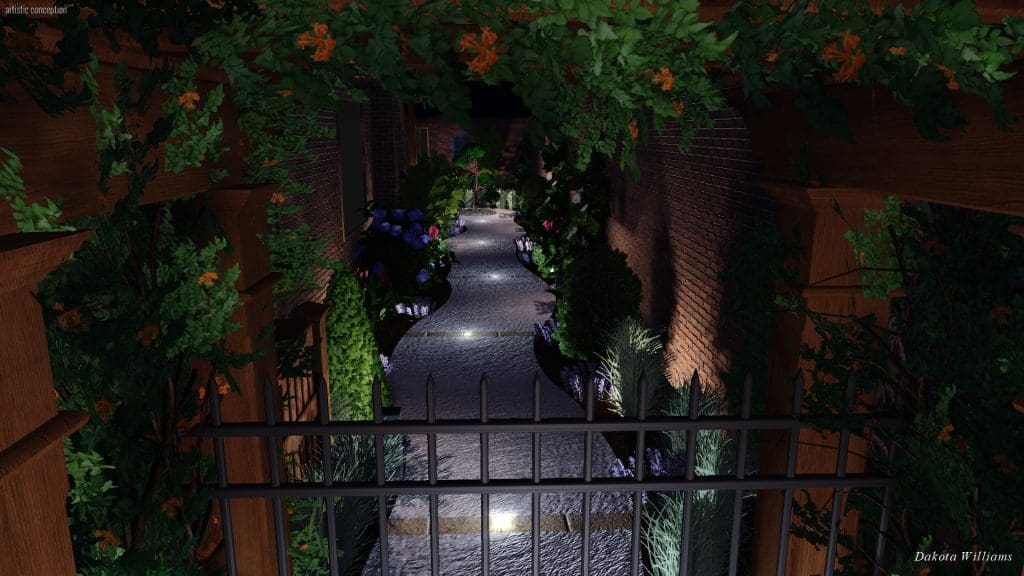
If you’re looking for an additional service to offer clients that complements your design/build projects, consider landscape lighting. Lotus Gardenscapes, based in Dexter, Michigan, started providing low-voltage lighting early on at the request of their customers. Traven Pelletier, owner and designer of Lotus Gardenscapes, says in the last two years landscape lighting has become more common along with the outdoor room concept. He says as these projects become more complex and high-end, these installations typically include lighting.
Gardens of Babylon Landscapes, based in Nashville, Tennessee, has been offering landscape lighting for 10 years now.
“It was a natural progression for us as our company and clientele grew,” says Tim Nebel, operations manager for irrigation, lighting & audio for Gardens of Babylon. “Lighting helps to extend the time our clients are able to enjoy their outdoor space and offers an element of safety in the nighttime – it’s a perfect fit for us as we help to create outdoor living spaces that can be enjoyed anytime, day or night!”
GreenPro, LLC, based in Jenks, Oklahoma, started offering landscape lighting six years ago
“It’s a great add-on for us,” says Dakota Williams, co-owner of GreenPro. “It’s easy to do while we’re out on the job site. Ultimately, it enhances what we do in the evening time. People enjoy their landscapes and outdoor spaces during the daytime, but if we can extend the depth of the property and make it more secure during the evening that’s just a plus.”
Nebel and Williams say they’ve noticed an increased demand for landscape lighting.
“I think just the whole staycation thing, everything outdoors is blowing up and more people are wanting to extend their time outside,” Williams says. “That’s what lightning does. It extends the time outside you’re able to not only see but you can go outside and sit and have a glass of wine in the evening, and then not just be sitting in the dark, or just on the back patio. You can enjoy that ambient lighting all the way to the edge of the property.”
Pitching Clients and Profit Margins

Thanks to landscape lighting’s popularity and practical aspects, it’s often not too hard to sell to clients.
Nebel says they provide information for outdoor lighting with all of their sales pitches.
“We provide information about our landscape packages with every landscaping consultation but typically customers know they want lighting from the beginning of the project,” Nebel says.
Williams says they include lighting in every landscape they do. He calls it their teaser set where they install five to seven lights as part of their package and he says customers always add more after they see it.
Pelletier says lighting isn’t a hard sell to clients as they’re often requesting it. Currently, they don’t list the lighting as a line item in their proposals, but Pelletier says he’d like to move to this.
“I think this year I’m going to encourage the team to include it as a base package,” Pelletier says.
As for the profit margins for landscape lighting, Williams says it is awesome, ranging from 50 to 85 percent.
“Use it as a high-profit addition,” Pelletier says. “You can mark it up significantly and generally the install times are pretty short.”
Landscape Lighting Design Concepts
While landscape lighting is not too difficult to sell, it does come with the challenge of having to be installed during the day but the full effect can only be seen at night.

“It definitely can be a challenge but to alleviate this issue, we provide our clients with a free 48-hour lighting demo so they will have the time to feel the full effect of what an outdoor lighting package will look like at their home before they purchase it,” Nebel says. “We install lighting anytime and will make adjustments as needed, particularly for uplights and floodlights.”
Williams says you cannot fully adjust the lights in the daytime and know that there are no hot spots in the system. Hot spots occur when you’re not washing or grazing properly.
“There are some tricks that you can use like you can use a green laser on the end of a light and shoot it,” Williams says. “That laser will show you where it’s going to project, but nothing beats going back out at dusk and fine-tuning those light fixtures just so you could avoid hot spots.”
Light color temperature is another aspect you have to consider. Pelletier says they tend to stick to warmer light colors for their designs. He says cooler lights can be used in more modern or more commercial settings, but he’s never had a client request cooler lights. Williams says the best light color temperature depends on what plant material or surface you’re lighting.
“For the more modern look, where you’ve got your light stones, we usually go with a 3,000 Kelvin,” Williams says. “When you’re doing more greenery plant material like your holly, your cypresses, you want to stick to 2,700 K because it’s a warmer temperature or if you’re lighting a brick surface or something with red.”
There are numerous lighting techniques, but the site will determine if some are possible.
“If you’ve got a water feature and you light through it, you can get some pretty amazing dramatic ripple effects on the hardscape at night,” Pelletier says.
Some of Williams’ preferred landscape lighting techniques are moonlighting and hanging lanterns from trees.
“Moonlighting is absolutely amazing,” Williams says. “It’s hard to do properly because if you’re not 20 to 30 feet in the tree moonlighting down then you’re actually blinding people because that light can be so bright.”

Williams encourages landscapers to get creative with the lighting design and figure out how to illuminate a space without having a downlight create a hot spot.
“One of the biggest mistakes I see with lighting design is path lights and I was there with my company in beginning,” Williams says. “We would throw in a billion path lights. Every five feet there’d be a path light, and it literally just looked like an airport in those front yards.”
Best Practices
If you’re installing landscape lighting in an existing landscape, Pelletier says it’s fairly low-impact so there’s typically not an issue with damaging the space. Williams says it comes down to where the trenches are going and how you’re trenching.
“We like to do a garden refresh, if you will,” Williams says. “If we’re doing their beds, then we’ll pull out the mulch. We’ll start from scratch. Hopefully, they don’t have annuals and sometimes they do so we just have to work behind them. It’s just being very careful.”
Williams encourages other landscapers to get with the manufacturer to learn how to install the lights properly to avoid callbacks. He says most callbacks are going to be caused by connections and how you laid the wire. Pelletier suggests trying a small install at your own house to get a feel for the work.
Williams says some of the common mistakes that occur when installing landscape lighting include putting wires directly in the ground, not in a conduit, and using indoor wire nuts.

“I’ve seen electrical tape, I’ve seen them not even use any kind of tape and they just twist the wires together,” Williams says. “Voltage drop doesn’t happen as much with LED lights but I still see it occasionally where they have run from a transformer that’s too far out and they’ve got too many lines pulling off that one run so their lights are not all the same luminance.”
One main mistake Pelletier says to avoid is buying low-budget products at Lowe’s or Home Depot because they do not last. He advises buying a quality product that has a warranty.
“Use quality products and don’t cut corners on the installation, especially when it comes to your wiring connections!” Nebel says. “Be open to visiting your clients at night so you can fine-tune the placements in a way that you couldn’t do during the day.”
“Look at it as a real opportunity to enhance your designs and make the landscape really pop,” Pelletier says. “It can make a huge difference in a good design, to see it with that light at night. I would also say have a good photographer and get some photography of your best projects done with the lighting on at night because it’s just such a dramatic effect. For a marketing tool, it’s a great addition to have those pictures in your portfolio or on your website.”
This article was published in the May/June issue of the magazine. To read more stories from The Landscape Professional magazine, click here to subscribe to the digital edition.

